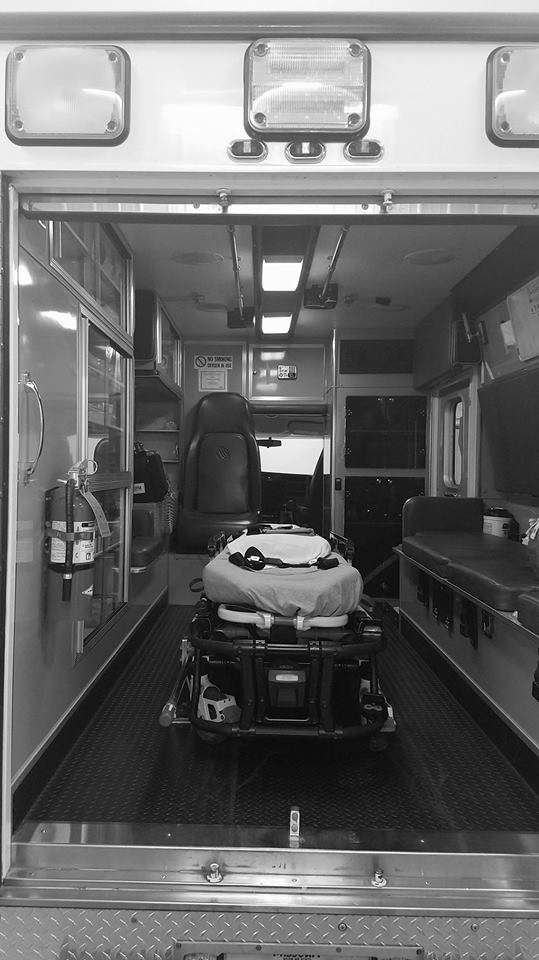I was following the conversation and began to look it up. I found this on the JEMS mobile website.
Friday, September 7, 2012
Adenosine is the drug of choice for paroxysmal supraventricular tachycardia (PSVT) and is once again Advanced Cardiac Life Support-approved for differentiating PSVT with aberrancy from ventricular tachycardia (v tach) in patients with monomorphic wide complex tachycardias.1 Adenosine is a potent and safe antiarrhythmic when used appropriately. However, its use in the wrong patient or rhythm can prove fatal. This article focuses on how to expertly use adenosine and to know when this “safe” antiarrhythmic can be dangerous and contraindicated.
Pharmacology & Mechanisms of Action
Adenosine’s mechanism of action can be thought of as a “temporary paralyzing” of supraventricular tissue. Pharmacologically, adenosine hyperpolarizes the cell by stimulating an inward potassium current and temporarily inhibiting calcium migration.2 In doing so, the pacemaker activity of the sinoatrial (SA) node, spontaneous atrial activity and conduction through the atrioventricular (AV) node are dramatically slowed or temporarily stopped.
Adenosine has no effects on accessory pathways, such as those seen in the Wolf-Parkinson White Syndrome (WPW). Mild side effects of adenosine are common. They include a transient sinus pause that usually lasts less than five seconds, chest pressure or tightness, dyspnea, facial flushing and the feeling of impending doom (see Table 1).2–4
Rare, benign side effects reported include anxiety and dizziness. In one large prehospital trial, 11% of patients had a minor transient complaint, with chest pain being the most common complaint seen in 4% of patients.4 Chest tightness was induced by adenosine administration in 83% of patients in one large in-emergency department (ED) study.5
Side Effects
Side effects from adenosine administration that are serious are extremely rare when used in healthy patients with PSVT (see Table 1). Adenosine may cause mild bronchospasm, which is almost always short lived. However, adenosine can also cause severe bronchospasm and should be given carefully to those with a history of asthma or chronic obstructive pulmonary disease (COPD).6 It shouldn’t be given to patients who are already wheezing. Adenosine has also been reported to cause prolonged sinus pauses, syncope, seizures and even asystole, although this rare side effect has been described almost solely in older patients with preexisting conduction disease and/or second- or third-degree heart block.7–9 Adenosine is the drug of choice for PSVT in pregnant patients.1
The biggest dangers with adenosine are seen in two groups of patients: 1) those with atrial fibrillation or atrial flutter, and 2) those in sinus tachycardia and not PSVT.
Numerous studies in the literature report serious rhythm degeneration and even death when adenosine has been inadvertently given to patients with either atrial fibrillation or atrial flutter. Adenosine can convert relatively stable atrial flutter with 2:1 conduction and a heart rate of 150 to 1:1 conduction with a heart rate of 300 and cause rapid clinical decompensation.10
Adenosine slows or blocks antegrade (atrial to ventricular) conduction through the AV node but doesn’t affect accessory or bypass tracts like those seen in WPW syndrome. Because of this, adenosine can be dangerous when given to patients with atrial fibrillation, especially if they have a bypass track. Numerous reports show patients degenerating into rapid atrial fibrillation with rates at 250 or greater and becoming hemodynamically unstable.10–13
Thus, an absolute contraindication to adenosine exists in patients who have either atrial flutter or an irregular rhythm in atrial fibrillation. Because rapid atrial fibrillation may seem regular on ECG monitor, paramedics are urged to run a rhythm strip and verify true regularity.
We find this easiest by making marks on a piece of paper that match the peaks of the QRS then moving the QRS-marked paper a few beats over to compare it to three to four new beats on the rhythm strip. If they line up, then the rhythm is regular; if they don’t, then the rhythm is irregular (and likely atrial fibrillation), and adenosine shouldn’t be used (see Figures 1a, 1b, 1c).
The other absolute contraindication to adenosine is in sinus tachycardia. Dehydrated patients, especially the elderly with fever, failure to thrive and/or an infection may appear to be in PSVT when in fact they’re barely compensated with a sinus tachycardia with a rate that may be greater than 150. These patients are at high risk for morbidity and mortality if adenosine is administered, and they have a prolonged sinus pause (see Table 2).
In cases for which there’s any chance that sinus tachycardia is the etiology of the patient’s elevated heart rate, a rapid fluid bolus of 250 cc should be administered. Any slowing by just a few beats per minute (rather than a dramatic conversion to a normal sinus rhythm) confirms the diagnosis of sinus tachycardia due to volume depletion.
This is also true in heat stroke victims with PSVT at rates approaching 180 beats per minute. EMS providers should rapidly hydrate and cool these patients before administering adenosine. If the patient’s pulse begins to fall with therapy, the diagnosis of sinus tachycardia due to heat illness and dehydration is confirmed, and adenosine is contraindicated. Table 2 lists the rhythms, rates and patient types in which the diagnosis of PSVT should be considered unlikely.





